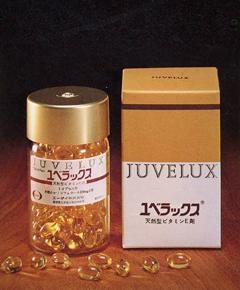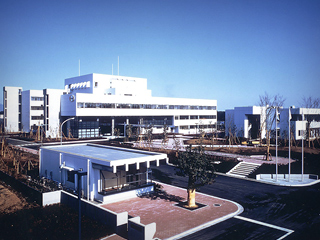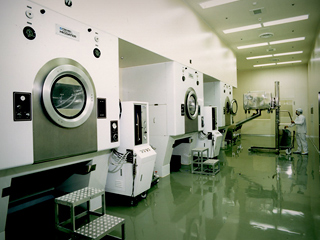In the 1970s, public awareness of health and safety was increasing in Japan and vitamin E attracted much attention as a vitamin for preventing lifestyle diseases and the effects of aging. It was against this backdrop that Eisai, confident in its established history as a vitamin E manufacturer, introduced Juvelux to the market in 1977. Juvelux was an over-the-counter drug containing a naturally derived vitamin E preparation that could be easily absorbed by the body. It would go on to become a long-seller for the company, and continues to sell well even today, more than thirty years later.
Since the development of Juvela—Japan's first commercial vitamin E product—at the Sakuragaoka Laboratory, Eisai had created an impressive line of other over-the-counter vitamin E products as well, including Chocola Sahne, Juvelon and Juvela C. Juvelux and the microcirculation activator prescription drug Juvela Nicotinate were central products for Eisai that helped to establish the company in the eyes of consumers as a trusted brand for dependable, high-quality vitamin E products.

















